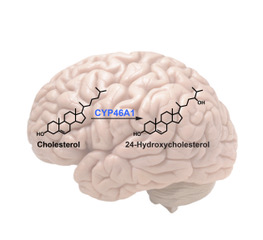
Irina A Pikuleva
Case Western Reserve University, USA
Title: Pharmacological enhancement of cholesterol metabolism and turnover in the brain as a therapeutic strategy for Alzheimer’s disease
Biography
Biography: Irina A Pikuleva
Abstract
Statement of the Problem: Alzheimer’s disease (AD) is a progressive brain disorder and the most common cause of dementia among older adults. Currently, there is no cure for AD with all anti-AD treatments being only symptomatic. Cytochrome P450 46A1 (CYP46A1) converts cholesterol to 24-hydroxycholesterol and thereby initiates the major pathway for cholesterol elimination from the brain. CYP46A1 also controls the rate of cholesterol biosynthesis in the brain and the rate of cerebral cholesterol turnover. Studies of mouse models of AD showed that increasing CYP46A1 expression in the brain by genetic means ameliorates the manifestations of AD such as amyloid burden and cognitive deficits. We were able to enhance CYP46A1 activity pharmacologically in vitro and in mice by discovering that CYP46A1 has an allosteric site, binding to which of some non-cholesterol related drugs (e.g., the anti-HIV medication efavirenz) increases the rate of CYP46A1-mediated cholesterol 24-hydroxylation. The purpose of this study was to evaluate the effect of efavirenz, activating CYP46A1 at a very small dose, on 5XFAD mice, a model of rapid amyloidogenesis.
Methodology & Theoretical Orientation: Mice were treated with efavirenz for four and nine months and assessed for cholesterol homeostasis in the brain, amyloid pathology, cognition, and brain genome.
Findings: Efavirenz treatment: stably activated CYP46A1 and enhanced cholesterol turnover in the 5XFAD brain; reduced amyloid-β burden and microglia activation in the brain cortex and hippocampus; and affected mouse behavior in a taskand treatment time-specific manner with ultimately improving mouse performance in Morris water maze. The data obtained enabled generation of a mechanistic model, which unified EFV effects.
Conclusion & Significance: CYP46A1-mediated enhancement of cholesterol metabolism and turnover in the brain has a potential as a therapeutic strategy for AD and should be evaluated in a clinical trial.

Figure 1: Cholesterol metabolism in the brain.

